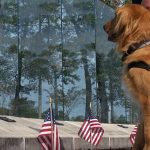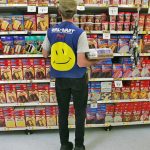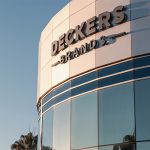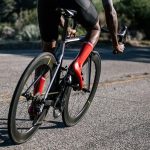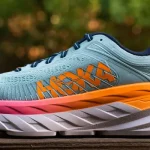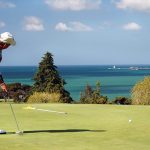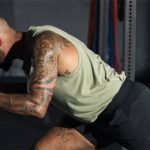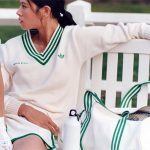The retail sector offered little excitement in the second quarter as athletic specialty and sporting goods retailers settled into their newly merged formats that produced little energy in the comparable store line. Genescos triumvirate of specialty nameplates and other specialty formats that have been acquired recently or have gone public were the exception, as Golf Galaxy, The Walking Company, and Zumiez all posted double-digit comp stores sales gains to join Genescos mid-to high-single-digit gains at its Journeys, Underground Station, and Hat World formats.
It was a very successful quarter for IPOs in the retail sector and the market appears to stay rather bullish on retail despite the anemic results from the big guys.
Seattle-based action sports retailer Zumiez kicked off the second quarter with their filing, with ZUMZ shares closing up more than 38% over the offering price the first day of trading in early May. Shares have continued to thrill, closing last week at $31.66, or up 76% from the $18 opening price.
Retail Ventures, the parent company to DSW, Filenes Basement, and Value City, spun off its DSW unit in late June. DSW shares debuted at $19 a share, or about 19% above its expected offering price in the $15 to $17 range. Shares continue to stay in positive territory, closing last week at $25.17, up 4.9% from the opening bell, but have remained stagnant compared to Zumiez shares.
Golf Galaxy hit the market the last day of the retail fiscal quarter, posting a 29.7% increase in its first day on the Nasdaq exchange. GGXY shares had opened at $14, a nice bump from the planned $11 to $13 price spread. Golf Galaxy shares have also stagnated since their initial run-up, but still closed at $19.12 last week, up 12.1% from its debut.
For the period ended July 30, 2005, or the quarter ended closest to that date for retailers not on a normal retail fiscal calendar, the retail sector again saw sales growth for the period outpace profit growth by more than a two-to-one margin, with sales for the total retail sector growing 9.6% in the second quarter, while profit gains were held to a 4.2% increase for the period. Excluding the impact of merger integration charges associated with the Dicks Sporting Goods/Galyans deal and the year-ago merger integration charges for the TSA/Gart deal, profit growth would have only increased 2.6% for the second quarter as the increased upside at DKS was offset by the reduced upside at TSA versus last years fully loaded P&L.
While the chart on page 5 is primarily made up of U.S.-based retailers, it was Europe that held back profitability for the whole retail sector and saw it decline for the Specialty segment. Weakness in Europe was the primary contributor to Foot Lockers sharp decline in the bottom line in the period, offsetting gains in the U.S., Europe, and Australia.
Excluding the Foot Locker impact on the bottom line, Specialty segment profits would have surged nearly 38% for the period, while sales would have grown about 20% for the quarter. Total retail sector profits would have outpaced sales growth by more than a three-to-one margin excluding Foot Locker.
Non-U.S. retail businesses had an impact on the Sporting Goods segment as well, but to a lesser extent. Forzani was the culprit here, as the largest sporting goods retailer in Canada took a hit on the bottom line as they move to reposition a number of their retail nameplates. Excluding Forzani, Sporting Goods segment profits would have been up 36.0% on 8.0% sales growth, and would have grown more than 26% excluding the merger integration charges at TSA and DKS.
But it was Gander Mountain that had the biggest impact on the bottom line numbers in the Sporting Goods segment as the company posted another quarter of comp store sales declines and saw margins shrink on the lack of a co-branded credit card. The retailer got even more bad news after the end of the fiscal quarter as a judge ruled that Gander could not use its own name in catalog or Internet sales efforts (BOSS_0535). Excluding the negative impact of the GMTN business, Sporting Goods segment profits would have jumped nearly 39% on a 7.9% increase in sales.
Excluding the impact of the Foot Locker, Gander Mountain, and Forzani results, total pro forma retail sector profits would have grown 44.5% for the second quarter, easily outpacing the 10.3% sales growth for the same remaining retailers.
Sportsmans Guide was the key driver in the Catalog/Team/Web sector, helping the group eke out another positive quarter for the bottom line off of a very small profit last year. GSI Commerce also helped the cause by shaving a little off of its historic loss for the period, but the team guys both saw shrinking profits for the period. Collegiate Pacific and Sport Supply Group have since announced that they will become one, so it will be interesting to see how the synergies of the two businesses — one that has been acquiring field sales groups and the other that has been focused on Internet technology — can be merged to present a “best of both worlds” platform. Sales for the sector are a bit skewed due to the acquisitions made by Collegiate Pacific over the last year, and the company has not provided the detail necessary to present organic sales for the period.
The Family Footwear sector has been getting much more attention of late as they continue to increase focus on better brands in both performance and fashion athletic. Famous Footwear held the group back this time around as a later back-to-school stymied growth and margins and DSW is looking ahead to its Spring 06 test with Nike womens product in 30 stores. Carnival rocked the quarter with the right fashion athletic mix and strength in the womens dress business.

